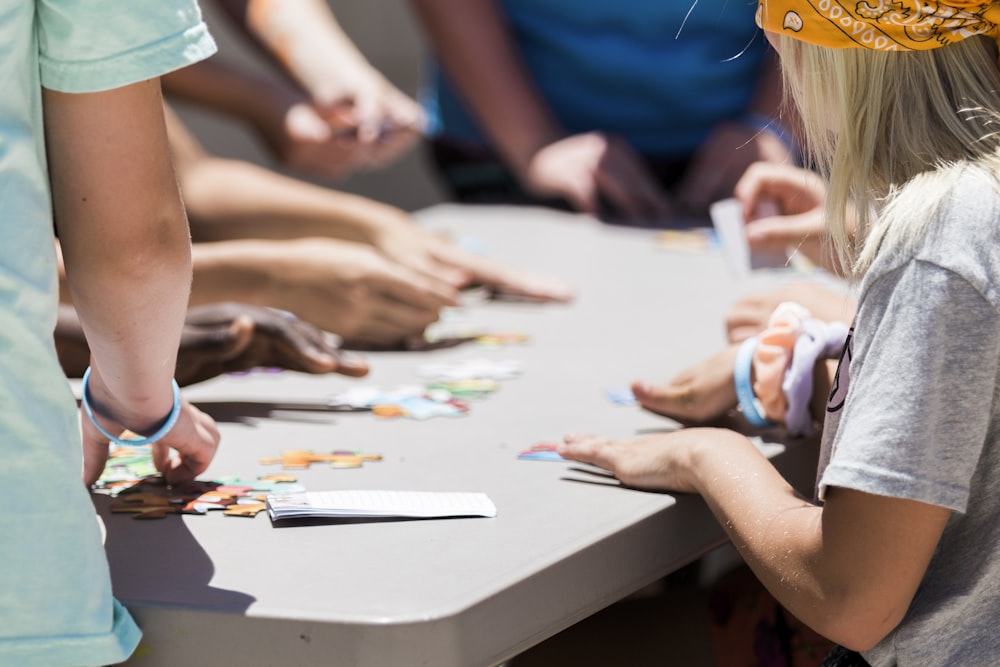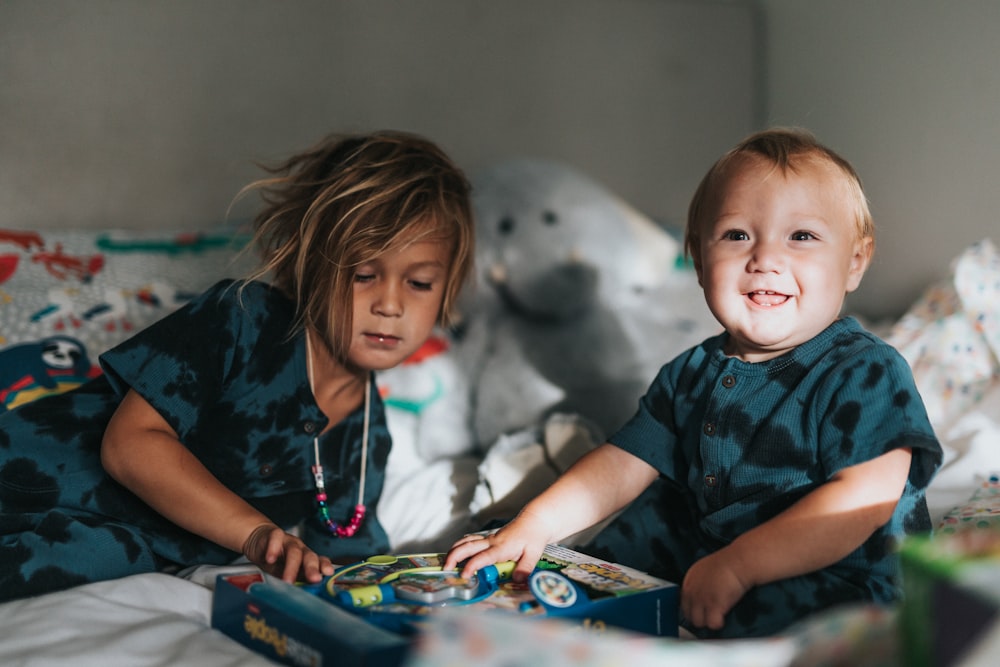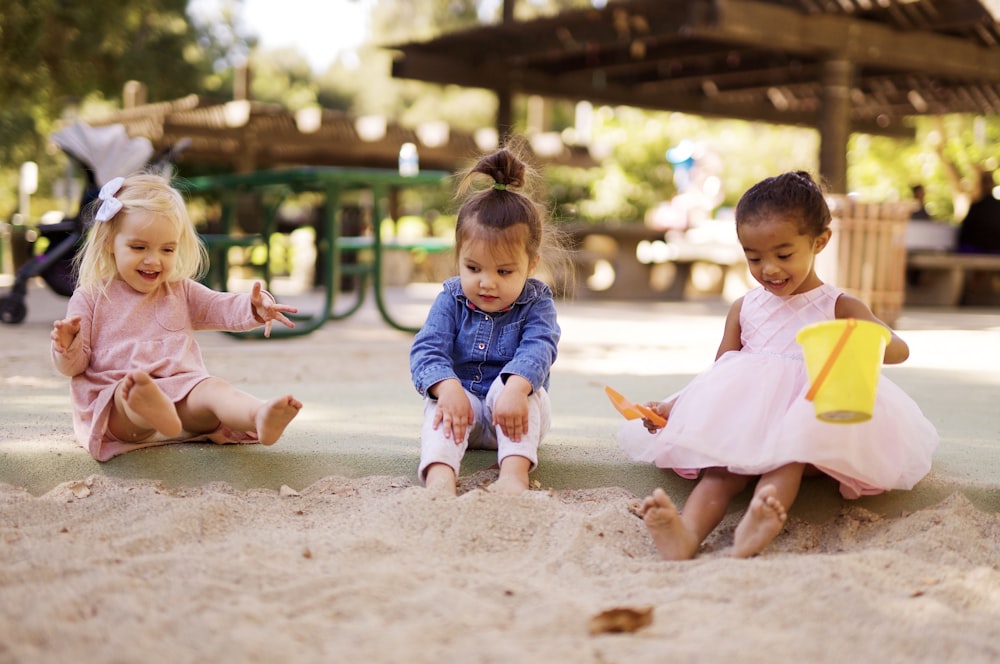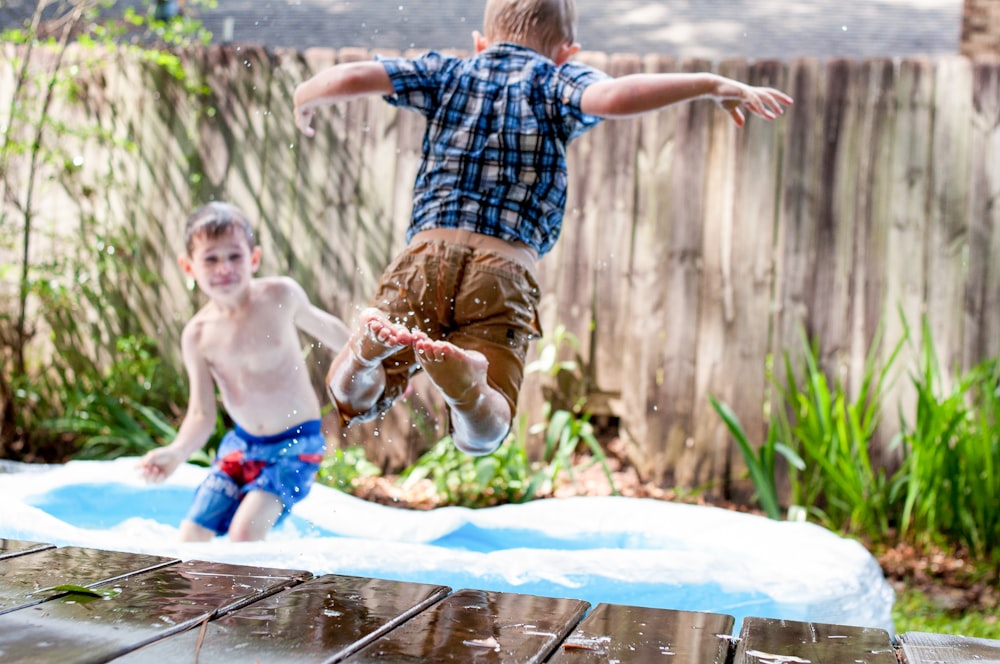Embarking on the enchanting journey of toddlers' social development, let's immerse ourselves in the captivating phase of parallel play. Imagine your little one surrounded by their tiny comrades, each engrossed in their individual play worlds right beside each other. It's a magical stage where they coexist in shared spaces but not necessarily in shared activities. Welcome to the world of parallel play—a symphony of solo adventures harmonizing together.
For those venturing into the realm of parenthood, observing your child seemingly absorbed in their own world amidst peers might trigger concerns about their social interactions. Fear not, for parallel play is a crucial stepping stone in the intricate dance of social skills.
In the lively landscapes of playdates, preschool classrooms, or the jubilant atmosphere of birthday parties, your toddler shines in the art of playing in parallel. Side by side with three or four companions, they revel in individual joy.
Yet, upon closer inspection, a delightful revelation unfolds. Your little one isn't just absorbed in their activities but also keenly watching and occasionally mimicking their playmates. This subtle interaction marks the silent crescendo of social maturity blooming.
Reflect for a moment on your own experiences when attending a gathering where unfamiliar faces abound. Most retreat into the sanctuary of their phones until the comfort of conversation envelops them.
The luminary mind behind the concept of parallel play, Dr. Mildred Parten Newhall, identified it as one of the six enchanting stages shaping a child's play journey. As we embark on this expedition through childhood development, let's explore the profound wisdom encapsulated in Dr. Parten's Social Behavior Theory and the six stages of play.
Dr. Parten's pioneering study on children's preschool playtime behaviors uncovered the mesmerizing connection between the dynamics of group play, social skill evolution, and language development. Simply put, as our little ones traverse the corridors of communication growth, the solo symphony of play begins to harmonize with the shared melodies of peer interaction.
Now, let's unravel the tapestry of these six enchanting stages that encapsulate the magical evolution of a child's play.
Stage 1: Joyful Discovery Play
Welcome to the initial chapter of a child's delightful play odyssey. Emerging in the first blissful months of infancy, unoccupied play is a symphony of scattered and goalless exploration. Picture tiny hands waving, little feet kicking, as babies joyfully acquaint themselves with the wonders of the world around them. Whether they're immersed in tummy time or captivated by a hanging mobile or the ceiling above, each moment is a step in their enchanting journey of discovery.
In this tender phase, the magic unfolds as babies not only refine their gross motor skills but also become intimately aware of their precious little bodies. It's a sensory feast for their curious souls, laying the foundation for a lifetime of joyful exploration. And, of course, the introduction of a special companion, like our Montessori Silicone Pulling Toy, adds an extra touch of wonder to this beautiful stage.
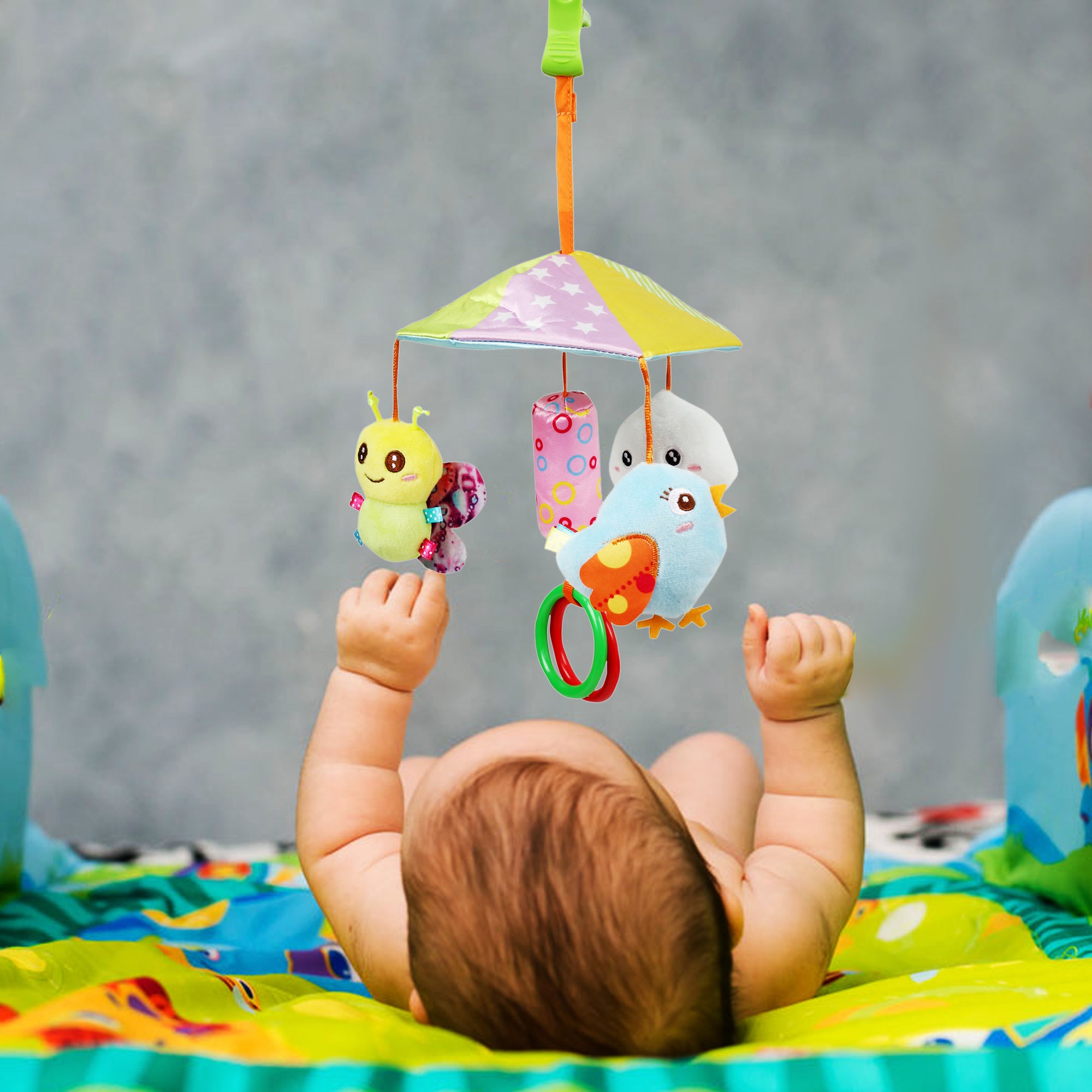
Stage 2: Cherished Solo Adventures
In the enchanting tapestry of a child's play evolution, we arrive at the heartwarming chapter of solitary play, commencing as early as three months old. At this tender age, socializing is yet a mystery, and the little ones find their greatest source of joy in their own delightful company. Imagine the scene – tiny hands exploring toys, curious eyes absorbing the world, all in a self-contained world of wonder.
This marks a crucial period of discovery, a time when babies delve into the depths of their surroundings. Picture them on their hands and knees, crawling in pursuit of new experiences, laying the foundation for a lifetime of learning. As they grow, this solitary play transforms, becoming more focused, seamlessly intertwining with the unfolding chapters of their playtime narrative. It's a cherished journey of self-discovery, paving the way for the beautiful stages that follow.
Stage 3: Curious Observer Play
In your toddler's playtime adventure, there's a special stage where you'll find them sitting back, quietly watching other kids at play. It might cross your mind – are they feeling left out or shy? Not at all. This is the phase where they're soaking in the world around them, learning valuable lessons from the sidelines.
During this time, your child is like a little detective, keenly observing how other kids interact, play with toys, and navigate the rules of various games. It's not about missing out; it's about them actively studying and understanding social dynamics. This is a completely normal and beneficial part of their journey towards social growth.
So, the next time you spot your toddler as a curious onlooker, appreciate the beauty of this stage. It's a moment of learning and wonder, a crucial step in their exploration of the vibrant world of connections and play.
Stage 4: Playmates in Proximity
Now, imagine a delightful scene where two or more children find themselves playing side by side, sharing the same play space, yet with minimal communication. Dr. Parten fondly terms this as parallel play, marking the joyful fourth stage in the six-part play journey.
Think of it as a friendly warm-up for the future chapters of play. It's a developmental milestone, a natural progression, so no need to fret. In just a moment, we'll explore why parallel play is a vital gem in early childhood development.
For now, bask in the assurance that everything is just fine. Your little one is reveling in their playtime, gently opening their world to the influence of peers. It's a careful dance of connection unfolding at this precious point in their journey.
Stage 5: Budding Social Play
Now, picture a delightful shift in your little one's world as we enter the enchanting phase of associative play, unfolding between ages 3 and 5. It's a time when children transition from being fully absorbed in their toys to a newfound interest in playing alongside their peers. This marks the visible outcome of the quiet discovery during parallel play, paving the way for the early stages of group play.
Although the play isn't fully structured, and there's no common end goal at this point, what matters most is that they are playing and learning together. It's a joyous time when kids start conversing about their activities, expressing what they're doing, or sharing their imaginative ideas during play. This delightful interaction sets the stage for the grand finale of children's play, which we'll explore shortly.
In essence, associative play is a vibrant chapter where social bonds begin to blossom, laying the foundation for the beautiful camaraderie that follows.
Stage 6: Playtime Harmony Unleashed
As children grasp the rules of the game and unite with a shared goal in mind, the enchanting era of cooperative play blossoms. This wonderful phase can unfold as early as age four, marking a time when children not only socialize but actively collaborate in crafting their play adventures.
Now, picture the joy as they work together to build a snowman, engage in a spirited game of hide-and-seek, or immerse themselves in delightful problem-solving challenges, much like the captivating world of Montessori toys for 5-year-olds.
Cooperative play is the pinnacle of playtime camaraderie, where the magic lies in shared experiences and collaborative endeavors. It's a heartwarming stage, fostering bonds and creating cherished childhood memories.
What Is the Benefit of Parallel Play?
- The First Step in Friendship: Picture this as the debut of your toddler's social adventure. After the phases of onlooker, solitary, and parallel play, it's time to transition into playing "with" other children. This gentle introduction, playing side by side, becomes the bridge to budding friendships.
- Peer-Powered Learning: Nestled next to playmates, your toddler becomes a sponge, absorbing the actions and discoveries of their companions. It's a journey of learning and growth, as they observe, mimic, and explore new realms of knowledge.
- Language Flourishes: While parallel play might seem silent, it's a canvas for your toddler to dip their toes into communication. From simple requests like "Can I have that toy?" to asserting ownership with a confident "That's mine!", these interactions lay the foundation for language and expression.
- Sharing and Taking Turns: In the shared space of playdates, the concept of sharing and taking turns blooms naturally. Whether it's divvying up toys or waiting for a turn on the swing, parallel play provides a fertile ground for instilling the virtues of cooperation and generosity.
- Navigating Social Cues: Next to playmates and their watchful parents, your toddler absorbs the unwritten rules of social interaction. They learn what's acceptable, witness reactions to instructions, and decode the subtle dance of social cues, fostering a deeper understanding of relationships.
- Motor Milestones Unleashed: As your little one witnesses the play antics of their peers, they embark on a journey of imitation. From ball games to new play ideas, each endeavor becomes a stepping stone for gross and fine motor development.
At What Age Does Parallel Play Occur?
The magic of parallel play often unfolds around 18 months, a unique milestone that varies for each child. Witness this enchanting stage during playdates or when friends and their little ones join for a meal. Remember, if your toddler isn't engaging directly with others, it's a normal phase in their development. Avoid pushing them to play together; let their instincts guide these early social interactions.
When Does Parallel Play End?
The transition from parallel to associative play typically happens between two to three years of age, though these stages can sometimes overlap. This period marks significant social and emotional growth, expressed through interactions with fellow kids. It's perfectly normal if your child also enjoys solitary play, as the Montessori method suggests, emphasizing children leading their play to build independence.
What Is an Example of Parallel Play?
Imagine two toddlers engrossed in playing with dough side by side. While they may not communicate or share materials, the creations they mold might bear surprising similarities. Another scenario unfolds with children using the same set of building blocks, each immersed in their play without collaboration. Social skills are in the early stages, and the focus is more on the materials than the playmates.
Parallel vs. Solitary Play
Though similar, parallel and solitary play represent distinct stages. Solitary play involves infants exploring for personal growth, while parallel play involves children aware of peers, often imitating their actions. The transition is natural, overlapping based on your toddler's pace and needs. Let your child express themselves in the way that feels most comfortable.
How Can Adults Help with Parallel Play?
Encouraging parallel play involves recognizing, inspiring curiosity, and engaging in activities that demonstrate rather than dictate play. Stimulate turn-taking skills, organize playdates with parallel-aware parents, and avoid forcing child plays. Child-initiated play is more rewarding and crucial for emotional development. Support this transition gently, providing Montessori toys by age to enhance the benefits of parallel play.
In the realm of children's playtime, understanding their cues and following their interests creates a rich tapestry of learning and joy. As parents, embrace the uniqueness of your child's play, guiding them through the magical stages of development.


